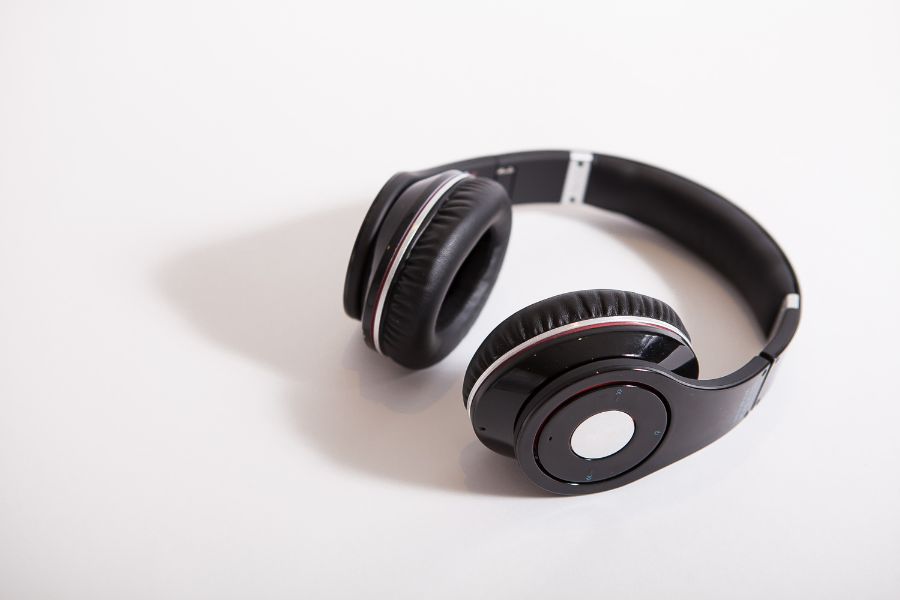With the rise of remote work and virtual meetings, having the right audio equipment like noise-canceling headphones has become essential for professionals.
Whether you’re attending a Zoom meeting, participating in a webinar, or collaborating with a remote team, the quality of your headphones can significantly impact your experience.
Two popular options are noise-canceling headphones and regular headphones, each with its own set of advantages and disadvantages.
This article will compare noise-canceling headphones and regular headphones for Zoom meetings, examining factors such as sound quality, comfort, price, and functionality. By the end, you’ll have a clear understanding of which type is best suited for your virtual meeting needs.
1. The Importance of Headphones for Zoom Meetings
Before diving into the comparison, it’s important to understand why headphones are crucial for Zoom meetings.
Unlike speakers, headphones provide a private listening experience and prevent audio feedback, ensuring clear communication. They also help you focus by blocking out distractions, making them an essential tool for remote work.
- Clear Audio: Headphones deliver high-quality sound, making it easier to hear and be heard.
- Privacy: Prevent others from overhearing your conversations.
- Focus: Minimize distractions and improve concentration during meetings.
Choosing the right type of headphones can enhance your Zoom meeting experience and boost your productivity.
2. The Case for Noise-Canceling Headphones

These headphones are designed to block out external noise, making them a popular choice for professionals who work in noisy environments. Let’s explore the advantages of using noise-canceling headphones for Zoom meetings.
2.1 Superior Noise Isolation
The primary feature of these headphones is their ability to block out external sounds, creating a quiet environment for virtual meetings.
- Active Noise Cancellation (ANC): Uses microphones and advanced algorithms to cancel out background noise.
- Improved Focus: Ideal for noisy environments like coffee shops, coworking spaces, or homes with distractions.
2.2 Enhanced Audio Quality
Noise-canceling headphones often come with high-quality audio drivers, delivering clear and crisp sound for both listening and speaking.
- Clear Communication: Reduces background noise for better voice clarity during meetings.
- Immersive Experience: Enjoy high-fidelity audio for presentations, videos, and music.
2.3 Comfort for Long Meetings
Many noise-canceling headphones are designed for extended use, with features like padded ear cups and adjustable headbands.
- Ergonomic Design: Reduces ear fatigue during long Zoom calls.
- Breathable Materials: Keeps your ears cool and comfortable.
2.4 Professional Appearance
They often have a sleek, professional design that can enhance your appearance during video calls.
- Modern Aesthetic: Adds a polished look to your home office setup.
- Brand Reputation: High-end models from brands like Bose, Sony, and Apple are widely recognized.
3. The Challenges of Noise-Canceling Headphones
While noise-canceling headphones offer many benefits, they also come with drawbacks, such as higher costs and potential discomfort. Let’s examine these challenges.
3.1 Higher Price Point
They are generally more expensive than regular headphones, which can be a barrier for some users.
- Premium Features: Advanced technology and materials contribute to the higher cost.
- Budget Constraints: May not be feasible for those with limited funds.
3.2 Battery Dependency
Active noise cancellation requires power, meaning you’ll need to recharge your headphones regularly.
- Limited Usage Time: Battery life varies by model, typically ranging from 20 to 40 hours.
- Inconvenience: Forgetting to charge your headphones can leave you without noise cancellation.
3.3 Potential Discomfort
Some users find these headphones heavy or tight, leading to discomfort during extended use.
- Pressure Sensation: ANC can create a feeling of pressure in the ears for some people.
- Fit Issues: Not all models are suitable for every head shape or size.
3.4 Sound Quality Trade-Offs
While noise-canceling headphones excel at blocking noise, some models may compromise on sound quality.
- Artificial Sound: ANC can sometimes alter the natural sound profile.
- Latency Issues: Wireless models may experience slight audio delays.
4. The Case for Regular Headphones

Regular headphones, also known as passive headphones, rely on physical design to block out noise. They are a more affordable and straightforward option for Zoom meetings. Let’s explore their advantages.
4.1 Affordability
Regular headphones are generally more budget-friendly than noise-canceling models, making them accessible to a wider audience.
- Cost-Effective: Suitable for those who don’t want to invest in premium features.
- Variety of Options: Available at various price points to suit different budgets.
4.2 No Battery Required
Regular headphones don’t rely on batteries for noise cancellation, making them a hassle-free option.
- Unlimited Usage: No need to worry about recharging.
- Reliability: Always ready to use, even during long meetings.
4.3 Lightweight and Comfortable
Regular headphones are often lighter and more comfortable than noise-canceling models, especially for extended use.
- Minimal Pressure: No ANC means no pressure sensation in the ears.
- Portable Design: Easy to carry and store.
4.4 Simplicity
Regular headphones are straightforward to use, with no additional features or settings to manage.
- Plug-and-Play: No need to configure ANC or Bluetooth settings.
- User-Friendly: Ideal for those who prefer simplicity.
5. The Challenges of Regular Headphones
While regular headphones are affordable and easy to use, they also have limitations, such as poor noise isolation and lower audio quality. Let’s examine these drawbacks.
5.1 Limited Noise Isolation
Regular headphones rely on passive noise isolation, which is less effective than active noise cancellation.
- Background Noise: External sounds can interfere with your Zoom meetings.
- Distractions: Less effective in noisy environments.
5.2 Lower Audio Quality
Regular headphones may not deliver the same level of audio clarity and richness as noise-canceling models.
- Muffled Sound: Passive isolation can affect sound quality.
- Limited Features: Fewer audio enhancements compared to premium headphones.
5.3 Less Professional Appearance
Regular headphones may lack the sleek, professional design of noise-canceling models.
- Basic Aesthetic: May not look as polished during video calls.
- Brand Perception: Lower-end models may not convey the same level of professionalism.
5.4 Wired Limitations
Many regular headphones are wired, which can restrict movement and create clutter.
- Tangled Cables: Wires can be inconvenient and messy.
- Limited Mobility: Tethered to your device during meetings.
6. Key Factors to Consider
When choosing between noise-canceling headphones and regular headphones for Zoom meetings, consider the following factors to make an informed decision.
6.1 Work Environment
Your work environment plays a significant role in determining which type of headphones is best for you.
- Noisy Spaces: Choose noise-canceling headphones if you work in a loud environment.
- Quiet Spaces: Regular headphones may suffice if your workspace is already quiet.
6.2 Budget
Your budget will influence whether you can afford premium noise-canceling headphones or need to opt for regular headphones.
- High Budget: Invest in noise-canceling headphones for advanced features.
- Low Budget: Regular headphones offer a cost-effective solution.
6.3 Comfort and Fit
Comfort is crucial for extended Zoom meetings, so choose headphones that fit well and feel good to wear.
- Try Before You Buy: Test different models to find the best fit.
- Consider Weight: Lighter headphones are generally more comfortable.
6.4 Audio Needs
Consider your audio requirements, such as sound quality, microphone performance, and wireless connectivity.
- High-Quality Audio: Opt for noise-canceling headphones for superior sound.
- Basic Needs: Regular headphones may meet your requirements if audio quality is not a priority.
7. Key Takeaways and Recommendations
Deciding between noise-canceling headphones and regular headphones for Zoom meetings depends on your specific needs and preferences. Here are some key takeaways and recommendations to help you choose.
- Choose Noise-Canceling Headphones If: You work in a noisy environment, prioritize audio quality, and have the budget for premium features.
- Choose Regular Headphones If: You work in a quiet space, prefer affordability and simplicity, and don’t need advanced noise cancellation.
- Consider Hybrid Options: Some headphones offer a balance between noise cancellation and affordability, providing a middle ground.
Conclusion
The choice between noise-canceling headphones and regular headphones for Zoom meetings ultimately depends on your work environment, budget, and audio needs.
Noise-canceling headphones offer superior noise isolation and audio quality but come at a higher cost and require regular charging.
Regular headphones are affordable, lightweight, and easy to use but may lack the advanced features and professional appearance of noise-canceling models.
By carefully evaluating your priorities and testing different options, you can find the perfect headphones to enhance your Zoom meeting experience and boost your productivity.
